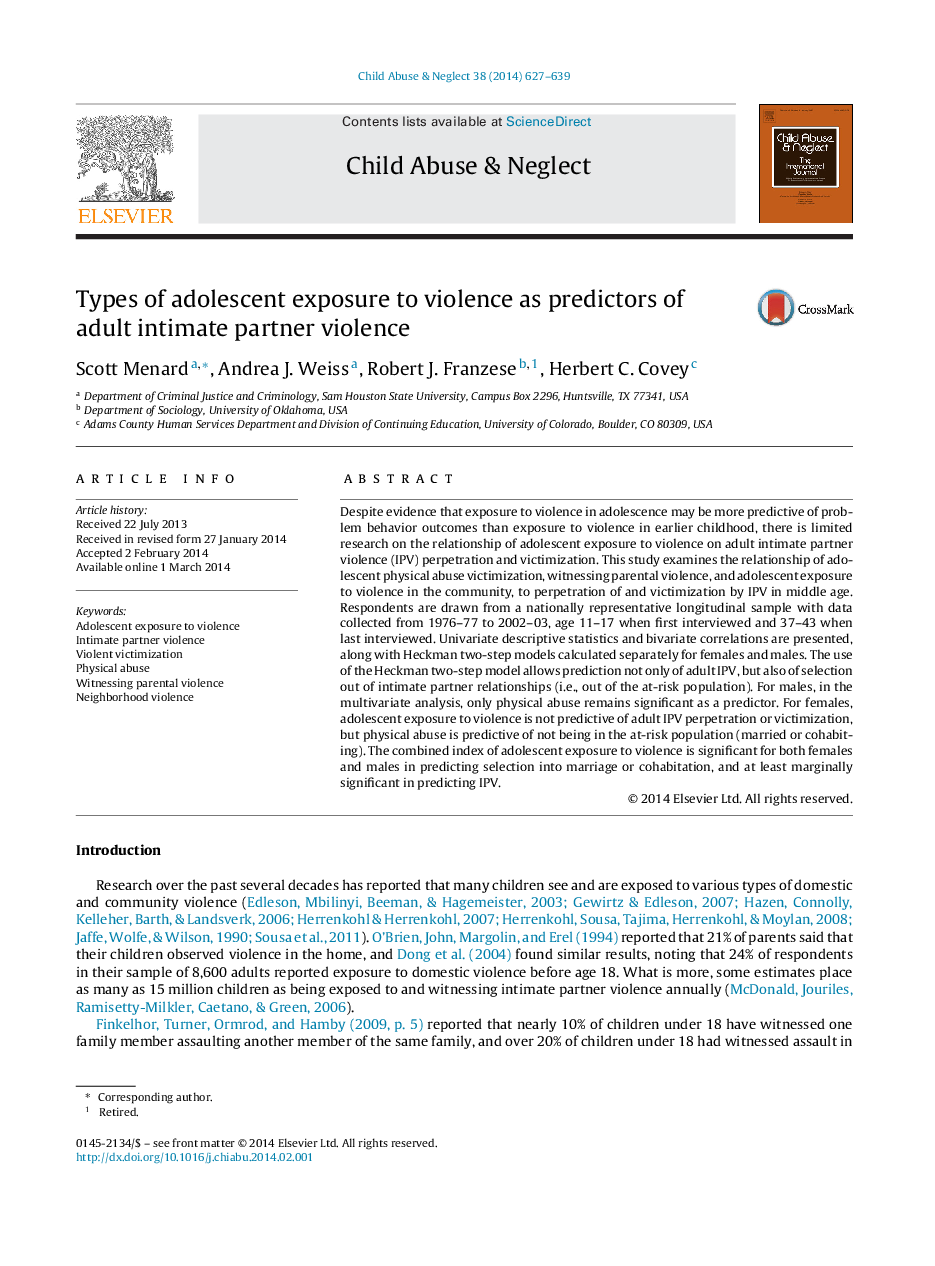| Article ID | Journal | Published Year | Pages | File Type |
|---|---|---|---|---|
| 344894 | Child Abuse & Neglect | 2014 | 13 Pages |
Despite evidence that exposure to violence in adolescence may be more predictive of problem behavior outcomes than exposure to violence in earlier childhood, there is limited research on the relationship of adolescent exposure to violence on adult intimate partner violence (IPV) perpetration and victimization. This study examines the relationship of adolescent physical abuse victimization, witnessing parental violence, and adolescent exposure to violence in the community, to perpetration of and victimization by IPV in middle age. Respondents are drawn from a nationally representative longitudinal sample with data collected from 1976–77 to 2002–03, age 11–17 when first interviewed and 37–43 when last interviewed. Univariate descriptive statistics and bivariate correlations are presented, along with Heckman two-step models calculated separately for females and males. The use of the Heckman two-step model allows prediction not only of adult IPV, but also of selection out of intimate partner relationships (i.e., out of the at-risk population). For males, in the multivariate analysis, only physical abuse remains significant as a predictor. For females, adolescent exposure to violence is not predictive of adult IPV perpetration or victimization, but physical abuse is predictive of not being in the at-risk population (married or cohabiting). The combined index of adolescent exposure to violence is significant for both females and males in predicting selection into marriage or cohabitation, and at least marginally significant in predicting IPV.
